
We’ve just returned from a fantastic week on Crete, which I’ll attempt to document by day, with a very selective sampling from the 700+ photos I returned with; best I can do since I can’t share the feeling of being there.
We were hosted by the excellent and encyclopedic Kostas Bouyouris, agronomist and co-founder of the Mediterranean Association for Soil Health, who led us through Cretan food products in an enlightening and hands-on week of visits.
Our first stop was at the village of Kroussonas, where a group of women got together to start a baking cooperative; they now have a kitchen, shop and catering business. Seventeen of them get together to make traditional Cretan pastries and other baked goods, including one of our favourites: fried (in olive oil of course) pastries filled with wild greens.
Also beautiful, beautiful hand-decorated breads for weddings and other celebrations:
There was a pause when a pickup truck laden with vegetables pulled up, and we waited for some of the bakers to do their produce shopping, Cretan style. I thought this was so clever: have one guy in a truck come to the village, instead of everyone in the village driving to the shops.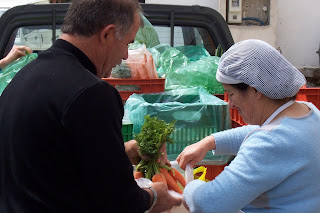
We pressed on through staggering landscapes
to Gangales, in the south of Crete, to visit the Melko pasta factory where we were particularly interested to watch them make xinohondros, a traditional “pasta” made of cracked wheat, mixed with acidified fresh sheep and goat milk, cut by hand, shaped into portions and dried. It’s cooked with oil, tomato, potato, onion and celery and often with snails, and as it’s a kind of fortified pasta-cum-thickener, is one of the foods served during periods of religious fasting.
We had a tart and nourishing soup made from this pasta for supper, followed by many other traditional dishes including a platter of boiled goat.
Day two began as had day one, with luscious bowls of fresh yogurt, honey, bread, sesame halwa and strong coffee. We trooped upstairs to have a talk from another inspiring Cretan agronomist, Sotites Bampagiouris, who talked us through the enterprise known as Bio Forum, a ten-year-old economically viable organic farming enterprise.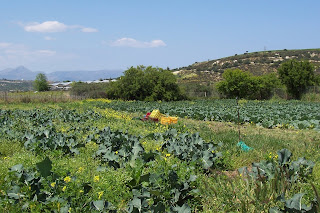
A marvel of thrift and economy, Bio Forum creates composting heaps made of olive leaves (by-product of the olive harvest), and straw bales from mushroom cultivation, among other organic matter. They don’t use manure for these since the compost is used on vegetables and would therefore come into direct and possibly dangerous contact with food; manure can be used for composting fruit trees.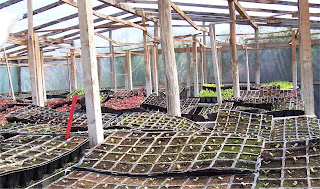
Seeds are nurtured in greenhouses and then transplanted when they are big enough to stand up against the weeds and insects.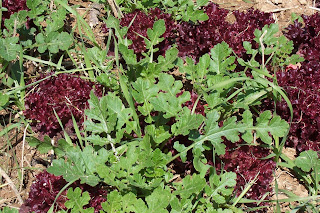
Weeds are not automatically seen as enemies in this field: they act as wind screens, provide a refuge for insects that would otherwise head for more edible homes, help to create an anchor for topsoil through their root systems, and act as natural compost when the soil is turned after harvest. These greens were plump, spicy and delicious; members of the mustard family are particularly useful in areas where soil is compacted as their roots help to break it up, and provide salad greens while they’re at it.
After an organic fruit break at the farm, we zipped off to the Boutari winery, Fantaxometocho (“domain of the phantoms”), for a tour and lunch. The Cretan operation is only three years old, although the mainland company has been going since 1879. On Crete, the vinyards are totally organic, and, even more shocking to me, the vines are grown without irrigation. They say this makes for a lower yield, but a better wine since the plants produce healthier, sweeter grapes with more concentrated aromas; irrigation plumps the grapes up but also waters down the contents. Their late harvested grapes produce a delectable sweet wine which we were lucky enough to sample at lunch.
On the way to our new base in the Amari valley, we stopped for a retail moment in one of the Bio Forum outlets in Iraklion; Don samples a little cheese with basil.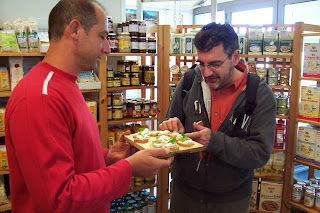
Supper at Aravanes taverna where we began with a salad of lettuce and wild greens, fresh cheese, olives, bread… and went on to have tart rice, lentil stew and more boiled goat.
We finished with baklava we had brought from a pastry shop which we were to return to the next day for a cooking demo. More than ready for bed we crashed….
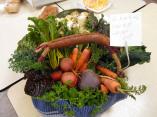
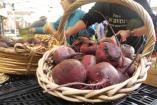

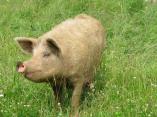
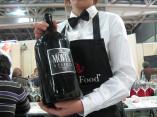
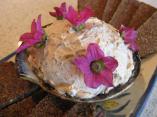
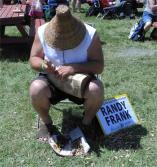
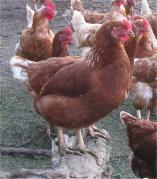
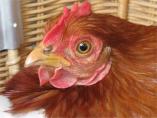
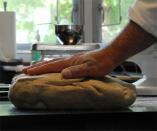
Pingback: Earth Medicine | Iambic Cafe